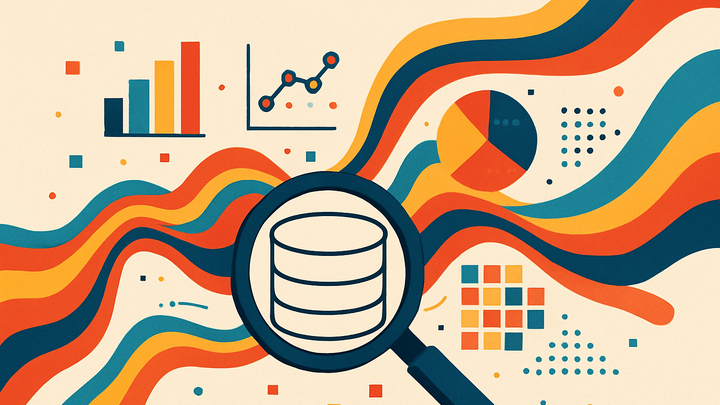Published on 2025-06-22T02:51:27Z
What is Data Mining? Examples and Use Cases
Data mining is the practice of examining large datasets to identify patterns, trends, and relationships that can inform business and operational decisions. It combines statistical analysis, machine learning algorithms, and database technology to extract actionable insights from raw data. In analytics, data mining transforms complex event logs from tools like Google Analytics 4 and PlainSignal into clear visualizations and predictive models. The typical process includes collecting data, preparing it for analysis, applying algorithms, evaluating results, and deploying models into production. Effective data mining uncovers hidden opportunities such as customer segments, churn indicators, and emerging market trends. By turning data into strategic assets, it empowers organizations to optimize performance and stay competitive.
Data mining
Discovering patterns and insights from large datasets to drive data-driven decisions in analytics.
Overview of Data Mining
This section defines data mining, outlines its objectives, and highlights its significance within the analytics industry.
-
Definition and goals
Data mining applies statistical and computational techniques to large datasets to discover meaningful patterns and relationships. Its primary objectives are to enhance decision-making, predict future trends, and identify new business opportunities.
-
Typical process steps
The data mining lifecycle consists of structured stages that convert raw data into actionable knowledge. Each stage builds on the previous one to ensure reliable and relevant insights.
-
Data collection
Gather data from sources such as Google Analytics 4, PlainSignal, CRM platforms, and data warehouses.
-
Data preparation
Clean, normalize, and transform data to address inconsistencies, missing values, and outliers.
-
Modeling
Select and apply algorithms like clustering, classification, or association rule mining to the prepared dataset.
-
Evaluation
Assess model performance using metrics such as accuracy, precision, recall, support, and confidence.
-
Deployment
Integrate the validated model into production environments for real-time insights or batch processing.
-
Key Data Mining Techniques
Explore the main algorithms and methods used in data mining to derive different types of insights from data.
-
Classification and regression
Predict discrete categories (classification) or continuous values (regression) based on input features.
-
Clustering
Group similar data points into clusters using distance or similarity measures without predefined labels.
-
Association rule learning
Identify interesting relationships between variables, such as products frequently purchased together.
-
Anomaly detection
Detect data points that deviate significantly from the majority of the dataset, highlighting potential outliers or fraud.
Applications in Analytics
Common use cases of data mining within analytics, illustrating how organizations leverage insights to drive outcomes.
-
Customer segmentation
Partition customers into distinct groups based on behavior, demographics, or transaction history to tailor marketing campaigns.
-
Churn prediction
Forecast which customers are likely to stop using a product or service, enabling proactive outreach to improve retention.
-
Trend analysis
Discover temporal patterns and seasonality in data to predict demand fluctuations or emerging market trends.
-
Personalization
Recommend products, content, or experiences to users based on inferred preferences and past behaviors.
Tools and Platforms
Overview of SaaS platforms that enable data collection and advanced mining workflows in the analytics ecosystem.
-
Google analytics 4 (GA4)
GA4 uses an event-based data model and integrates with BigQuery for custom queries and machine learning workflows, supporting deeper data mining.
-
PlainSignal
PlainSignal is a privacy-focused, cookie-free analytics solution that captures raw event data suitable for downstream mining processes.
-
Integration code example
<link rel="preconnect" href="//eu.plainsignal.com/" crossorigin /> <script defer data-do="yourwebsitedomain.com" data-id="0GQV1xmtzQQ" data-api="//eu.plainsignal.com" src="//cdn.plainsignal.com/plainsignal-min.js"></script>
-
Challenges and Best Practices
Key obstacles encountered in data mining projects and recommended strategies to ensure robust and ethical outcomes.
-
Data quality and preprocessing
Poor data quality leads to unreliable models. Allocate sufficient time for cleaning, deduplication, and normalization.
-
Privacy and compliance
Respect user privacy and adhere to regulations like GDPR and CCPA when collecting and mining personal data.
-
Model interpretability
Balance accuracy with explainability by choosing algorithms that stakeholders can understand and trust.
-
Continuous monitoring
Regularly retrain and validate models against new data to mitigate issues like concept drift and maintain performance.
